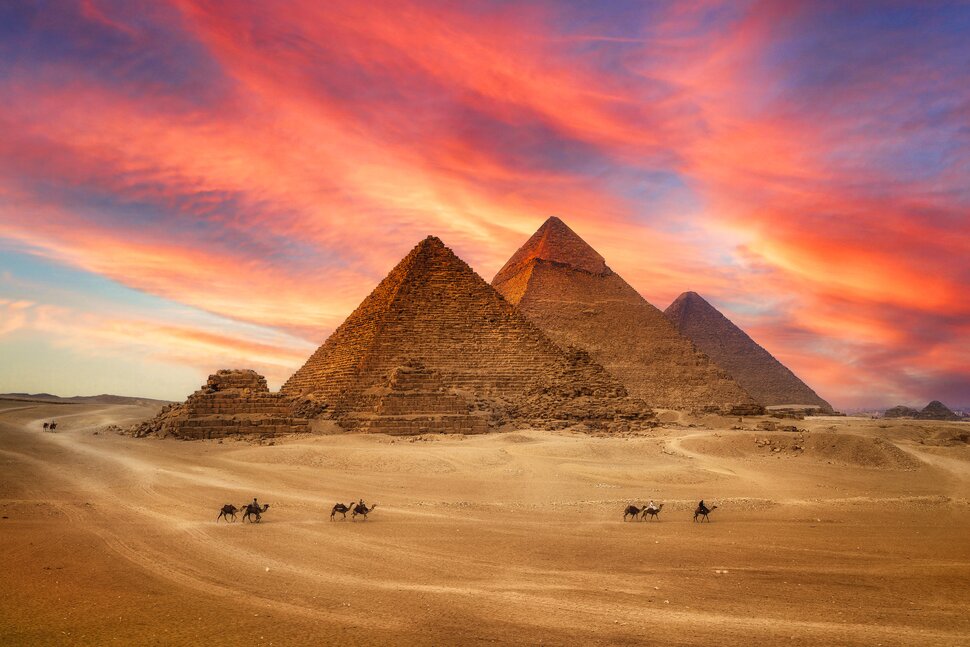In this article, we’ll take a closer look at some of the world’s most famous infrastructures, including their history, design, and impact on society.
The Great Wall of China
The Great Wall of China is undoubtedly one of the world’s most famous infrastructures. This iconic wall stretches over 13,000 miles and was built over several centuries to protect China’s northern borders from invaders. The wall consists of many different sections, some of which date back over 2,000 years. The wall was constructed using a variety of materials, including brick, tamped earth, stone, and wood, with some portions of the wall featuring watchtowers, fortresses, and barracks.
The Great Wall is not only a remarkable feat of engineering but also a cultural icon and symbol of China’s strength and resilience. Today, it stands as a testament to the perseverance and determination of the many workers who built it, enduring harsh conditions and often sacrificing their lives in the process. The Great Wall is a testament to the human spirit and an engineering marvel that has captivated the world for centuries.
The Panama Canal
The Panama Canal is a world-renowned infrastructure that connects the Pacific and Atlantic Oceans. This engineering marvel revolutionized global trade by reducing travel time and costs for ships. The canal stretches for 50 miles across the Isthmus of Panama, providing a crucial shortcut for vessels traveling between the Atlantic and Pacific Oceans.
The construction of the canal was a monumental task that required the excavation of millions of cubic meters of earth and rock, and the creation of massive locks and dams to control the water flow. The canal was officially opened in 1914 and has since played a vital role in global trade, allowing ships to bypass the long and perilous journey around the southern tip of South America. The Panama Canal remains an engineering marvel, showcasing the power of human innovation and determination to overcome seemingly insurmountable obstacles.
The Empire State Building
The Empire State Building is one of the most recognizable skyscrapers in the world and has stood as an iconic symbol of New York City for nearly a century. Completed in 1931, this 102-story Art Deco masterpiece was the tallest building in the world until 1970 and remains a defining feature of the city’s skyline. The building was constructed in just 13 months, an impressive feat given the scale and complexity of the project.
The Empire State Building features an observatory on its 86th floor that offers breathtaking views of New York City, attracting millions of visitors each year. The building’s innovative design, which includes setbacks and a spire, has influenced countless skyscrapers since its construction. The Empire State Building is a testament to human ingenuity and the ability to create awe-inspiring structures that leave a lasting impact on the world.
The Golden Gate Bridge
The Golden Gate Bridge is a stunning suspension bridge that spans the Golden Gate Strait in San Francisco, California and has become an iconic symbol of the city. Completed in 1937, this engineering marvel is an impressive feat of human ingenuity and determination. The bridge is over 8,000 feet long and features two main towers that rise over 700 feet above the water, connected by massive suspension cables that support the roadway.
The bridge’s vibrant orange color was chosen to increase visibility in the fog that often blankets the area. The Golden Gate Bridge has become a cultural icon and a symbol of San Francisco, attracting millions of visitors each year who come to marvel at its beauty and engineering prowess. The bridge remains an enduring symbol of human achievement, showcasing the power of collaboration and innovation in creating infrastructure that connects people and places.
The Chunnel
The Chunnel, also known as the Channel Tunnel, is one of the world’s most impressive and iconic infrastructures. This undersea railway tunnel connects England and France and spans over 31 miles, making it one of the longest underwater tunnels in the world. The construction of the Chunnel was a monumental engineering feat, requiring the excavation of over 13,000 feet of rock beneath the sea floor.
The tunnel features two main rail tunnels and a service tunnel, and trains can travel through the tunnel at speeds of up to 100 mph. The Chunnel has revolutionized transportation between England and France, making it possible to travel between the two countries in just 35 minutes by train. The Chunnel is a testament to human ingenuity and innovation, showcasing the power of infrastructure to connect people and places and facilitate economic growth and cultural exchange.
From the Great Wall of China to the Chunnel, the world’s most famous infrastructures have captured our imagination and awe for centuries. These engineering marvels showcase the ingenuity and determination of humanity, as we have pushed the boundaries of what was once thought possible. The use of steel, like those in Salt Lake City, in these iconic structures, has played a critical role in their construction, providing the strength and durability needed to withstand the test of time.

